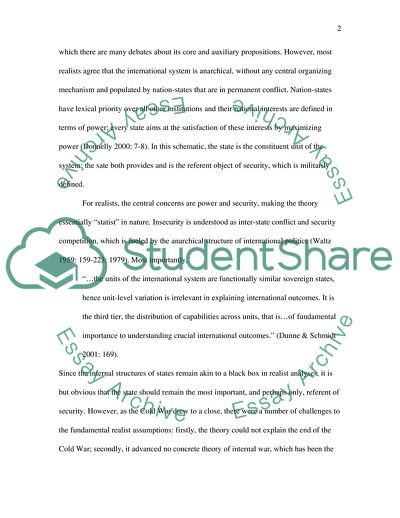Cite this document
(Referent Objects: From the State to the Individual Assignment, n.d.)
Referent Objects: From the State to the Individual Assignment. Retrieved from https://studentshare.org/politics/1722052-2what-is-the-most-appropriate-referent-for-security-the-state-the-individual-what-and-who-is-security-for-use-international-relations-theory-to-illustrate-your-answer
Referent Objects: From the State to the Individual Assignment. Retrieved from https://studentshare.org/politics/1722052-2what-is-the-most-appropriate-referent-for-security-the-state-the-individual-what-and-who-is-security-for-use-international-relations-theory-to-illustrate-your-answer
(Referent Objects: From the State to the Individual Assignment)
Referent Objects: From the State to the Individual Assignment. https://studentshare.org/politics/1722052-2what-is-the-most-appropriate-referent-for-security-the-state-the-individual-what-and-who-is-security-for-use-international-relations-theory-to-illustrate-your-answer.
Referent Objects: From the State to the Individual Assignment. https://studentshare.org/politics/1722052-2what-is-the-most-appropriate-referent-for-security-the-state-the-individual-what-and-who-is-security-for-use-international-relations-theory-to-illustrate-your-answer.
“Referent Objects: From the State to the Individual Assignment”. https://studentshare.org/politics/1722052-2what-is-the-most-appropriate-referent-for-security-the-state-the-individual-what-and-who-is-security-for-use-international-relations-theory-to-illustrate-your-answer.


